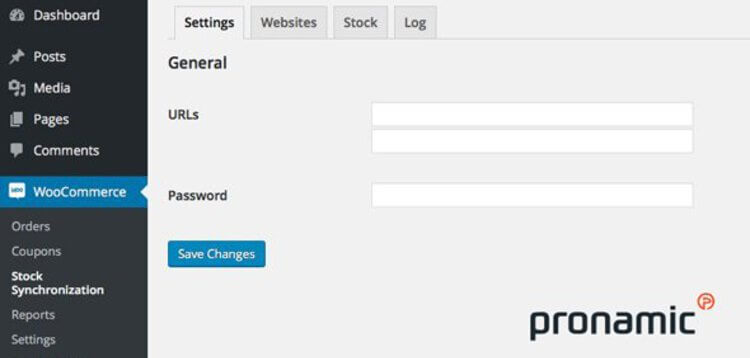Total
23/12/2025 : We HAVE 13284 Items and more than 3565 happy members.
Aperçu
Item description
The WooCommerce Stock Synchronization plugin allows you to keep the stock quantity of products (based on SKU) in sync across multiple WooCommerce stores. As soon as the stock quantity of a product changes, the plugin will push the new stock quantity to all connected shops. It’s really like magic and works great with both regular WordPress installations as well as multisites.
WooCommerce product stock quantity sync for multisite or any domain
The shops are linked to each other by URL in the plugin settings, so you can sync with WooCommerce running on any of your domains.
Using separate WordPress installations or a multisite on subdomains:
https://www.webshop.com/
https://retail.webshop.com/
https://distributor.webshop.com/
or using different domains (either with or without multisite):
https://www.abc-shop.fr/
https://www.shop.com.au/
https://www.webshop.co.nz/
Notice: The WooCommerce Stock Synchronization plugin only syncs the stock quantity. There are no plans to support syncing other product data.
Easy setup, solid synchronization
This plugin is a real time saver and keeps the stock quantity in sync for you across all your shops. After purchasing and installing the plugin, you can add the URLs of the WooCommerce shops you want to synchronize to in the plugin settings (menu item WooCommerce » Stock Synchronization). Make sure the plugin is installed and activated on all your stores and set a random synchronization password. You’ll need to use this same password on all the connected stores. It’s as easy as that and as soon as stock levels change, the inventory value automatically updates on all connected shops.
Sync WooCommerce Inventory SKU
Ensure that all corresponding products share the same inventory SKU across your shops (if you use variable products / product variations, make sure that all variations have their own unique SKU), the SKU will be used to identify products during synchronization. The plugin will update the product inventory on all connected shops whenever the stock level of a product changes, for example when a new order is paid.
Product Added to the system.
Please purchare this item you can see note for Buyer !
- Please check the version we provided before purchasing. Because it may not be the latest version of the author.
- Before making a purchase, please read the Terms and Conditions & Refund Policy.
- If you have any questions, please first read the FAQ.
- If you haven’t found the answer to your question, please contact us, we will response asap.
- You can download the product after purchase by a direct link on your Downloads sections.
- Please note that any digital products presented on the website do not contain malicious code, viruses or advertising. We buy the original files from the developers.
- We offer frequent updates for one year from the date of purchase, but that doesn't mean we will have updates every version because not every developer release we have right away. After this period, you have to purchase the item again to receive further updates.
- We regularly update products as soon as we are notified about an update, we go and download it from the author and update it on our site, but In case the current version of the product is not the latest, You can request an update for the product by contact form.
- We send regular emails advising when products have been updated so please be sure to provide an active email address when you sign up.
- Our support team is available 24/7, if you have any question or need help in installing or configuring digital products purchased on the website, please don’t hesitate to contact us.
- Please note that we are not developers of the provided products, so our technical support capabilities are limited. We do not change product functionality and do not fix developer bugs.
- For more information please read FAQ & About Us.
Prix
$4.99
Use Unlimited Websites
Free Updates

| Created | 20-11-2019 |
| Updated | 20-11-2019 |
| Catégorie | Plugin |
| Taille du fichier | 0.02 MB |
| Commentaires | 0 |
| Vues | 5152 |
| Ventes | 0 |
| Downloaded | 2 |









